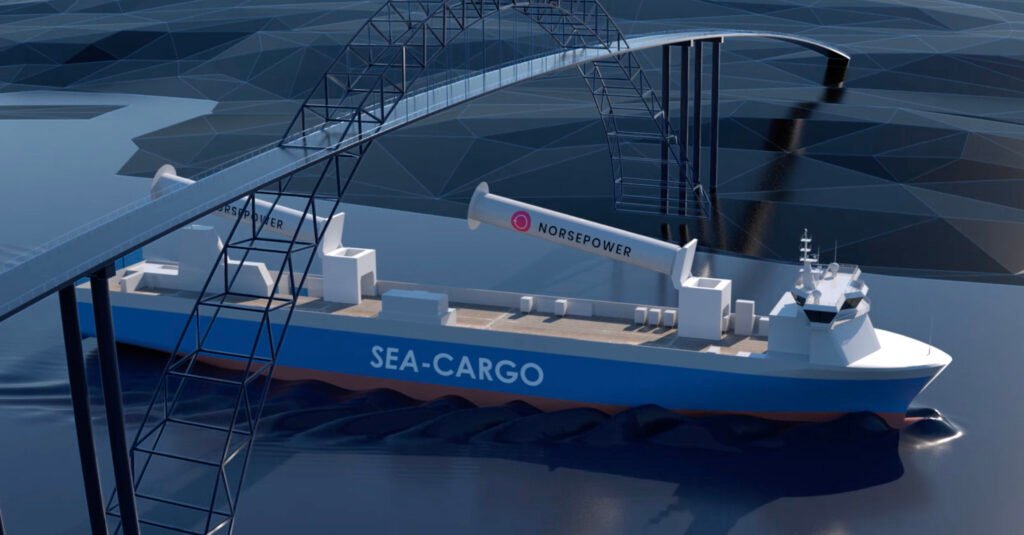The International Maritime Organization (IMO), a United Nations agency, sets targets for emissions reductions from maritime shipping. Using 2008 emissions as a baseline, they are pushing for a 50% reduction in carbon emissions from shipping by 2050, with smaller targets by 2030.

By retrofitting existing ships, they can remain in service for longer, as they will not need to be rebuilt or retired as quickly to meet climate goals.
Norsepower, a company that builds modernized sails to reduce fuel consumption and emissions on ships, got an order to install five of its Rotorsails on a bulk carrier in 2021.
This is the first order for a bulk carrier, and the company’s sixth installation since founding in 2012.

Norsepower’s Rotorsail technology uses a modernized version of the Flettner rotor, a spinning cylinder that uses the Magnus effect to harness wind power to thrust a ship.
Even if the wind is coming from the side of the ship, or from other directions, the Rotorsail can still help push the ship forward.
The Rotorsail system is fully automated. It takes information from wind sensors and other ship data to determine when the Rotorsails would be able to actually make a difference and improve the ship’s fuel consumption.

When conditions are right, they automatically turn on and start helping push the load. When conditions are not right, they turn off to not waste energy turning themselves.
Shipping accounts for 2-3% of global emissions and is still growing. Because the world cannot go without this vital service, the only way to improve its contribution to greenhouse gases is by lowering emissions.
Reference- Norsepower PR, Clean Technica, EV Obsession, Futurism






